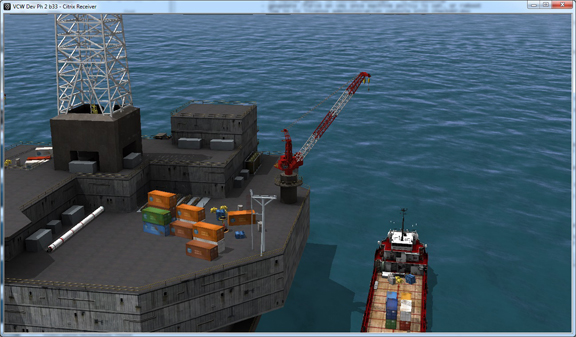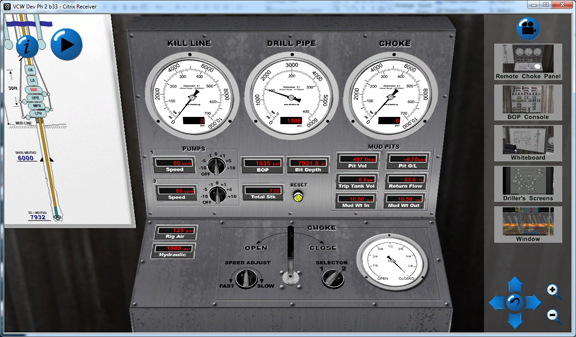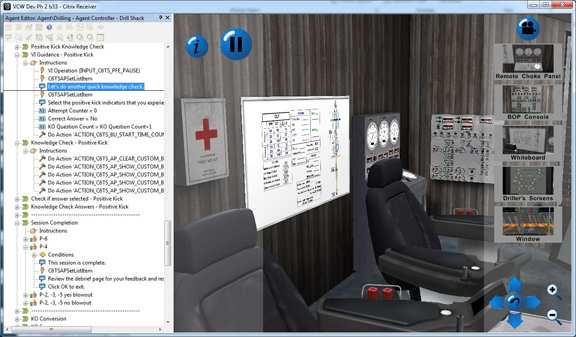February 26, 2014
Josha Lewis can teach how to you to use the complex machinery and equipment in offshore oil platforms and underground mines. With his method, you don’t necessarily need to be on an oil rig or in a mineshaft. You can do this from a computer.
As the CTO of the Training Systems division of Check-6, Lewis is responsible for developing the company’s PC-based training program CATS (stands for Competency Assurance Training System). Check-6 customers use it to train their new hires and to test the skill level of their employees.
The system was designed by “commercial and combat aviators” for “the Game Boy generation,” in Check-6’s own words. The experience is much like being in Microsoft Flight Simulator, a highly popular video game that lets you take control of a realistic airplane cockpit. Lewis and his team put in a lot of efforts to make CATS’s virtual environment feel real. If a trainee makes a catastrophic operational error, he or she will witness an explosion, complete with flames and smokes (thankfully, also virtual).
“In fact, our customers ask for the explosion,” said Lewis. “They want to make it apparent when you make a mistake.”
Lift-CAT, for example, is designed for crane operators. Well Control CAT is designed for mastering drilling operations. “They’re based on video game technology,” Lewis explained. “It’s a 3D-rendered world.” That’s the only way to satisfy the targeted Game Boy generation that expects virtual worlds to look like the game environments in Tomb Raider and Battlefield, popular first-person shooters praised for its realistic blood and gore.
CATS has something else in common with many graphics-intense video games. It relies on the GPU—in this case, NVIDIA GPUs—to render and constantly refresh its interactive world. Check-6 developers use NVIDIA’s Enterprise GRID to develop and test CATS before deployment at customer sites.
Aside from the developers responsible for the 3D content of the virtual worlds (like the replica of an oil rig’s console and the surroundings), Check-6 also employs courseware developers to create the training materials (questions to pose to the trainee during the session, imaginary scenarios to test the trainee’s skills, and so on). Courseware developers are located all over the U.S. but remotely connected to CATS, housed in a data center in Dallas, Texas.
“When the [courseware designers] are working, they’re operating Windows 7 virtual machines, using Citrix‘s [Virtual Desktop Agent, called XenDesktop], running on the NVIDIA GRID hardware,” said Lewis. “The program has a relatively large installation footprint [4 GBs]. These courseware developers are essentially working from their homes without an IT department. So to have them install and run a very complex application on their own is not practical.”
With NVIDIA GRID and Citrix, Check-6 can keeps CATS in its own IT-controlled environment and gives developers access to it via virtual machines.
“We also want all the developers to be on the same configuration,” said Lewis. CATS is constantly updated by content developers; therefore, delivering these updates to courseware developers’ virtual machines by updating the central server ensures consistency.
When something goes awry with the program, whether it’s a data corruption or a crash, the centralized approach makes it easy to restore the virtual machine to its prior state remotely from backup data.
“In just a couple of minutes, we can resurrect the failed machine,” said Lewis. “That’s important especially when they’re facing a delivery deadline.”
Currently, Check-6 customers keep CATS on their own networks. (They’re usually deployed in isolated locations, connected to the outside world via satellite links.) Check-6 is exploring the prospects of hosting training and testing sessions on the NVIDIA GRID, thereby extending the way the courseware developers currently use the system to the trainees at the clients’ sites. The company is also considering hardware preloaded with CATS as another option for its clients.
“It’s a fairly new technology, so finding the right package is a challenge,” said Lewis. “We are always looking for clients who are willing to push the envelope with us.”
Looking ahead, Check-6 sees virtual training as a way to open up new offerings . “On-demand training, software as a service, subscription, pay by the hour, pay by number of users, pay by number of courses—we’re heading that direction. That’s the vision,” Lewis said.
Joshua Lewis will deliver a session on this topic at upcoming NVIDIA GPU Technology Conference (GTC, March 24-27, San Jose, California). Look for “Graphics Virtualization Summit Session: S4637 - Simulation On Demand: Using GRID as a Platform to Develop Simulation-Based Training with a Distributed Team” (Tuesday, 03/25, 15:00 - 15:50, Room 210F).
Note: DE is a media partner of NVIDIA GTC.
Subscribe to our FREE magazine, FREE email newsletters or both!
About the Author
Kenneth Wong is Digital Engineering’s resident blogger and senior editor. Email him at [email protected] or share your thoughts on this article at digitaleng.news/facebook.
Follow DE








